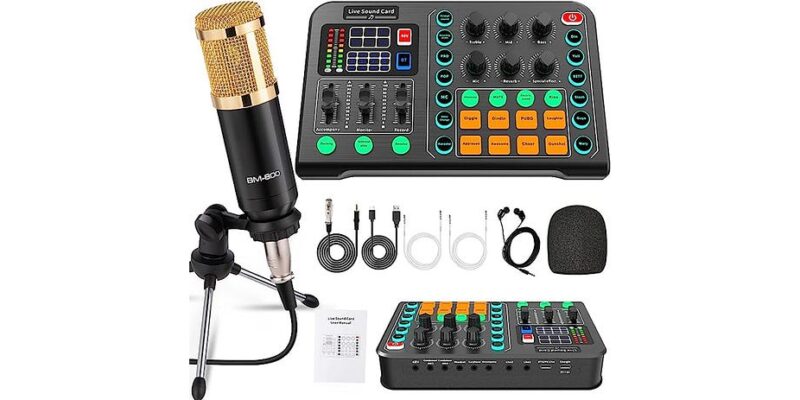Podcasting has exploded in popularity over the last decade, transforming from a niche corner of the internet into a mainstream media platform. This surge is driven by the unique convenience and intimacy that podcasts offer, allowing listeners to delve into a wide array of topics, stories, and discussions at their own pace. People can tune in during their morning commute, at the gym, or while doing chores, making podcasts a versatile form of entertainment and education.
In this article, we’ll explore the basics of podcasting and provide some tips on how to launch your show. Whether you want to stay up-to-date with current events, learn something new, or share your thoughts with the world, podcasting can help you become a part of the conversation.
Understanding Podcasting
Podcasting is a form of digital media that consists of episodic audio recordings, typically consumed through streaming services like Apple Podcasts or Spotify. It’s similar to radio in many ways but with some important distinctions. For one, podcasts are often self-published and can cover any subject imaginable. Additionally, while radio programming relies on scheduled broadcasts, most podcasts are available for streaming or downloading on demand.
Podcasts have become especially popular in recent years due to their portability and convenience. With smartphones, tablets, and other mobile devices, it’s easier than ever to take your favorite shows with you wherever you go. Plus, the cost of starting a podcast is minimal compared to traditional radio programs, which makes it a great option for aspiring broadcasters.
Getting Started
If you’re interested in launching your podcast, here are some tips to get you started:
Research & Planning
Before investing your time and money into creating a show, it’s important to do some thorough research. What audience do you want to reach? What topics do you want to cover? What format is the best for your topic or story? Gather some ideas and come up with a concept that resonates with people.
Equipment & Software
The most essential piece of podcasting equipment is an external microphone, which will help ensure quality recordings. You’ll also need audio-editing software such as Audacity, which is free and relatively easy to use. If you plan on using a laptop for recording, make sure it has an audio-out port or a headphone jack with a microphone adapter.
Platforms & Distribution
Once your podcast is ready for the world, you’ll need to distribute it through different platforms. Spotify and Apple Podcasts are two of the most popular services, but there are other options as well. You’ll also want to create a website for your show and maintain a social media presence to reach potential listeners.
Recording Your First Episode
Now that you have the basics down, it’s time to record your first episode. The process may feel intimidating at first, but keep in mind that practice makes perfect. Make sure you have a clear outline for your episode and read it out loud before recording. Choose a quiet location with minimal background noise and use headphones to monitor audio levels as you go.
Editing & Post-Production
After recording your episode, the next step is post-production. This is where you’ll remove any bloopers and arrange the audio clips into a finished product. Again, practice makes perfect here and you may need some trial and error before mastering the process. Once your episode is ready, it’s time to upload and share your work with the world!
Podcasting can be a great outlet for creativity and self-expression, allowing anyone to become a broadcaster. With some research, equipment, and practice, you’ll soon be on your way to launching your show. So what are you waiting for? Get sound on and get podcasting!
Growing Your Audience
Once you have a few episodes under your belt, it’s time to start thinking about growing your audience. Here are some tips on how to do this:
Promotion & Outreach
To reach potential listeners, you’ll need to promote your show. Start by submitting your podcast feed URL to popular directories like Apple Podcasts and Spotify. You can also send emails or DM followers on social media to let them know about your show.
Engagement & Interaction
Engagement is key in podcasting, so make sure you interact with your listeners and ask for feedback on your episodes. Respond to comments on social media or join forums relevant to your topic. You can also include a call-to-action at the end of each episode, asking people to leave reviews or share your show with friends.
Networking & Collaborations
Networking is also a great way to boost engagement and build an audience for your podcast. Reach out to other podcasters in your niche and see if they’d be interested in collaborating on episodes or cross-promoting content. You can also join podcasting communities to find new listeners and share your work.
Podcasting is a great way to connect with the world and share your ideas, stories, and insights. With the right setup and strategy, you can kickstart your podcasting adventure in no time! Best of luck, and remember to have fun along the way.





